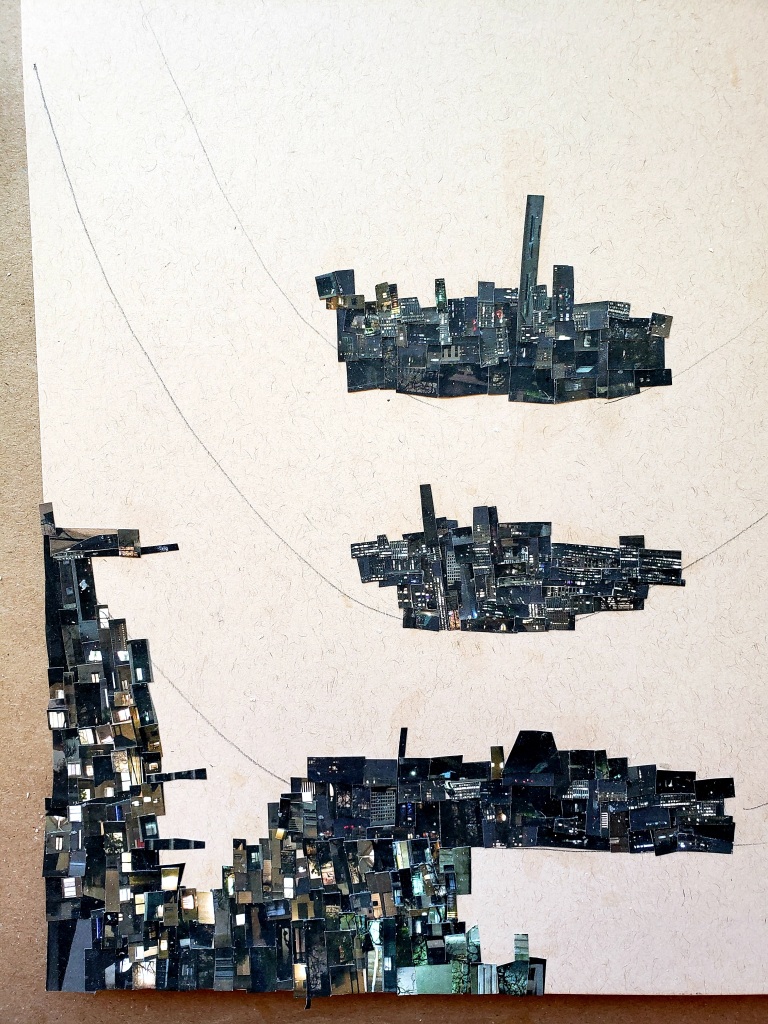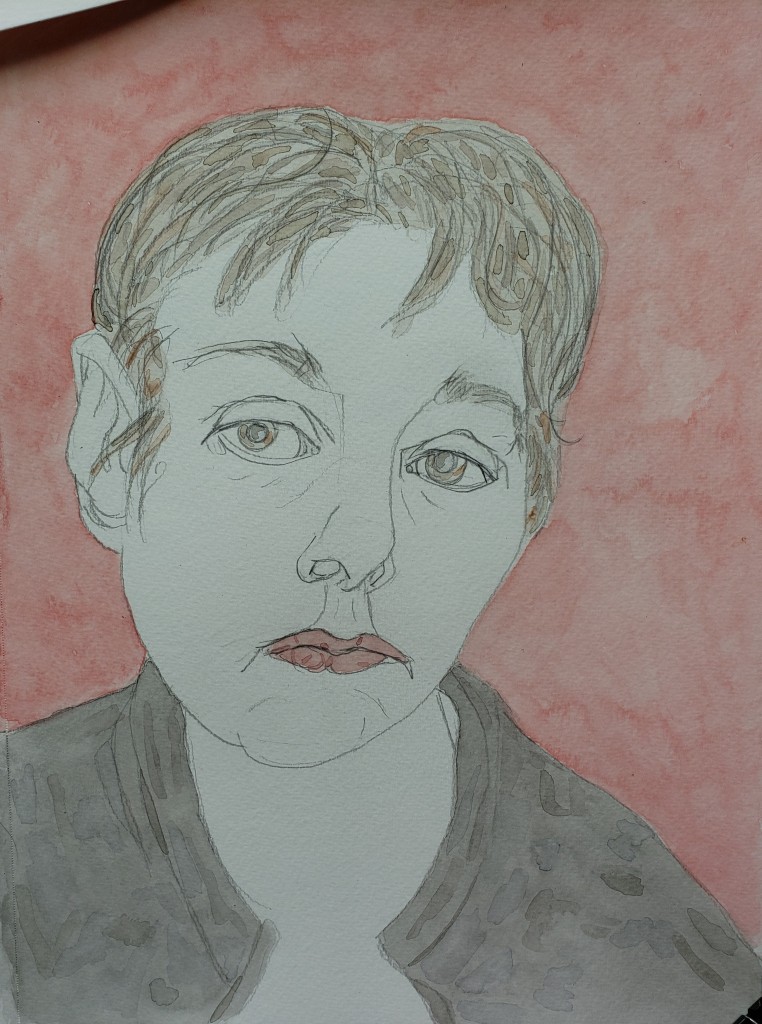With each of my Cinefield® pieces I try to one up myself or stretch forms in some manner. For this piece, I wanted to create a work where one can go back and even with repeated viewings find new little moments. I feel it succeeded, this being the most rhythmically complex piece I have ever done (so far!).
In the past, I have not gone into certain aspects common to the creation of all Cinefield® pieces as I was conscious of it sounding too close to boasting. All the images are from photos which I personally took. I always have a rough outline of what I am doing in pencil on the paper. However, when I look at the photos I use, often limiting myself to one or two which I just print in multiple copies, I do not know what will go where. I can have two copies of the same photo and cut them up completely differently. All the pieces are very tiny. I do not know what tiny piece goes where until I am laying it down.
I work with anywhere from one to three 11×17 sheets on tiny paper confetti sized pieces. I stand at table looking at the paper w/pencil outline for design and then see what I have cut up and where I feel it should go. What this means is that every Cinefield® which represents hundreds of hours per piece, each work session is an act of complete improvisation.
This piece is 11×17 . no digital magic, just my trusty scissors and adhesive applied with brush.





A.I & art. There is still a misconception about A.I generated artwork. A.I, if you ask it to create a city scene, does not spontaneously create a work from scratch. It pulls different aspects of pre existing work by others to create a sort of frankensteined version, more often than not without permission of the original artists. Copyright your works before doing anything with them, this includes posting on social media. If your work blatantly shows the artist’s hand i.e it looks done by hand, it’s not as much a worry as mediums such as photos et al.























